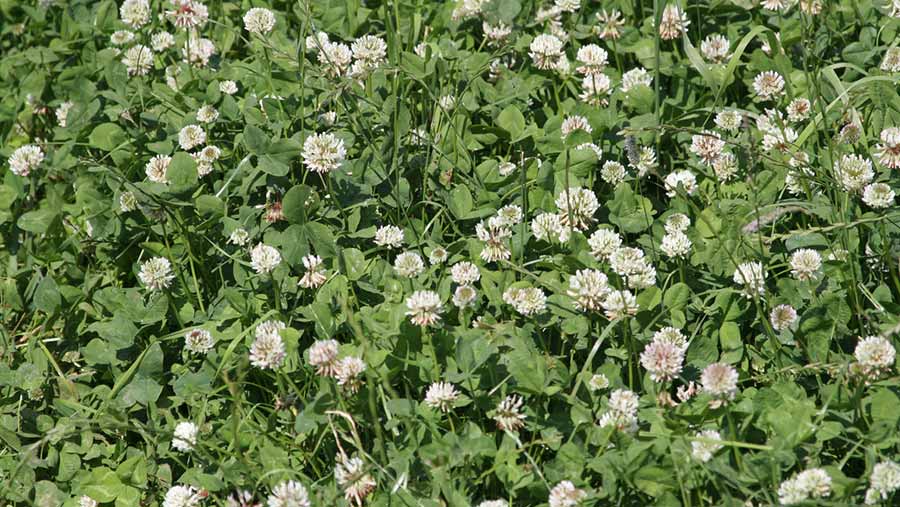Milk yield increases with addition of clover to pasture, study finds
 © Tim Scrivener
© Tim Scrivener Dairy farmers could increase milk yield and reduce costs by incorporating white clover into their ryegrass pastures, Irish research suggests.
The addition of white clover to ryegrass pastures led to an increase in milk production per cow, reduced nitrogen use, and reduced nitrous oxide emissions, researchers at Teagasc Clonakilty Agricultural College, County Cork, discovered.
During the three-year study, they found:
- A grass-clover system receiving 150kg/ha of N produced only slightly less DM/ha than a ryegrass system receiving 250kg/ha of N – 14.4t of DM/ha and 14.5t of DM/ha respectively
- While a grass-clover system receiving 250kg/ha of N produced 1,850kg DM/ha more than a grass-only system receiving a similar amount of N
- Animal performance was also “consistently high” in the grass-clover system, with an extra 58kg of milk solids produced a cow over two years of the study
“Perennial ryegrass ploidy [use of tetraploid or diploid grass] did not affect milk or pasture dry matter production,” said Teagasc researcher Brian McCarthy.
“However, white clover inclusion had a significant effect.”
See also: 5 ryegrass varieties added to Recommended List
“Both milk and grass production was greater on the grass clover swards compared with grass-only swards. The experiment demonstrated the potential of white clover to improve the productivity of pasture-based production systems in Ireland,” he said.
Teagasc is planning further research to assure dairy farmers of the benefit of incorporating white clover into their existing pasture, which they say can be done through direct reseeding or overseeding.
